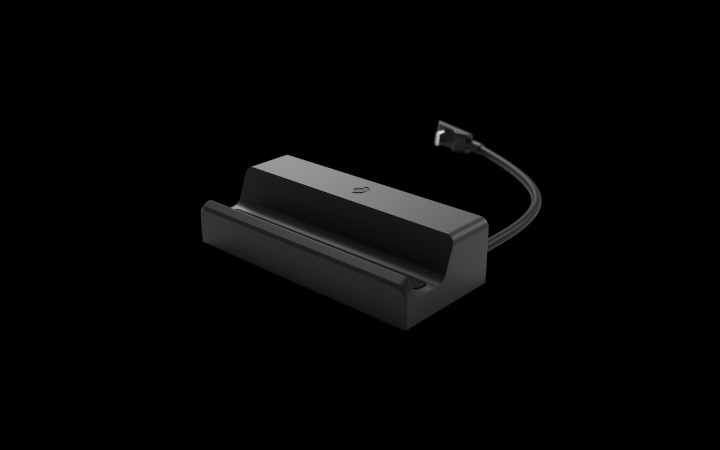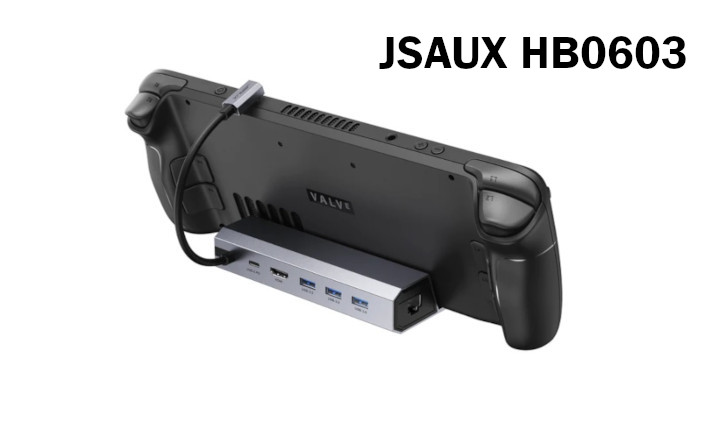
How much dock could a Steam Deck dock if a Steam Deck could dock… wood? Okay, so that woodchuck tongue-twister reference didn’t really pan out as I’d hoped…
Anyway, I’ve finally taken a moment to check out Valve’s long-awaited first-party dock for the Steam Deck, and I have to say, I’m feeling pretty lukewarm about the whole thing.
To be honest, I was never really all that interested in a dock to begin with, as I have no qualms about playing the Deck exclusively in handheld mode. I did end up buying a JSAUX Steam Deck dock a couple of weeks ago, and so far have only used it in one gaming session on my big-screen TV. For me, the Deck’s screen size and clarity really sell the gorgeous visual acumen of the games I’ve played thus far, and having the Deck only inches away from my face all but makes up for the huge TV screen that would be several feet across the room. It might not be one-for-one, as far as size is concerned, but it’s comparable enough to make the difference negligible — at least for me.
As I’ve stated in the past — or, at the very least, thought inside my brain on numerous occasions — there is also an inherent intimacy of playing these games in such close proximity to my eyeballs. My body almost morphs around the Deck as it becomes the epicenter of my posture and entire being.
But just for posterity sake, let’s take a look at the specs for Valve’s dedicated Steam Deck dock ($89.99), and compare them to that of the nearest and so far the most popular corollary peripheral, the JSAUX HB0603 dock ($49.99).

Steam Deck Tech Specs:
- 3 x USB-A 3.1 Gen1 Ports
- Gigabit Ethernet
- External displays
- DisplayPort 1.4, HDMI 2.0
- USB-C Power Delivery passthrough input (power supply included)
- 6″ USB-C captive cable with low profile 90° connector
- Included PSU with 1.5m long cable (same as what comes with Steam Deck)
- 117mm x 29mm x 50.5mm
- Approx. 120 grams
JSAUX HBO602:
- 6 ( HDMI 2.0 *1, USB 3.0 *3, Gigabit Ethernet *1, USB-C *1)
- HDMI Output HDMI 2.0 4K@60Hz
- USB USB 3.0
- Ethernet Input Gigabit
- Max Power Output Power Delivery 100W
- 6-in-1 Docking Station & User Guide (Cable & Power Charger NOT included)
It is worth noting that JSAUX does also offer the JSAUX Deck HB0604 ($129.99), which has a built-in M.2 card slot so you can slot in an SSD for extra storage without having to use a micro SD directly in the Deck itself. But aside from the M.2 slot, the specs are similar to the HBO603.
There is, of course, also the first-gen HBO602 ($39.99) if you want a slightly cheaper earlier model.
Now, I am no tech guy, so perhaps I am not the ideal person to be making this comparison. But for the most part, it does seem like the Valve dock might have some slight advantages, or at least one would hope considering it costs $30 more than the JSAUX deck (which for me has worked perfectly fine in what little use I’ve gotten out of it). And although the JSAUX HBO604 costs roughly $50 more than the Valve deck, having that built in M.2 seems like a quality addition for the added cost.
But tech stats and personal preference aside, one would assume that, since Valve is producing their own dedicated dock, there might be some inherent benefit to going with their dedicated peripheral, since it might more succinctly integrate with the Deck itself. But this might just be idle speculation on my behalf.
There is also a one-to-two-week shipping period after purchasing the Steam Deck dock, with the JSAUX model taking roughly only about a week tops. If you are in need of immediate docking, this might be a deciding factor.
For me, I am going to stick with my JSAUX dock for now, although I might upgrade to the M.2 model just because I’m a fancy lad.

But what say you? Will you be going with the Valve dedicated dock? Have you been waiting all of this time to get one? Or will you go with a JSAUX or for that matter any number of other third-party options? And most importantly, does my lack of tech savvy absolutely boil your blood? Sound off in the comments section, folks. That’s what it’s there for.
If you’re using the dock just to connect the Deck to your TV, you don’t need a dock actually. You can use an adapter to connect an HDMI cable to the USB C port on the Deck.